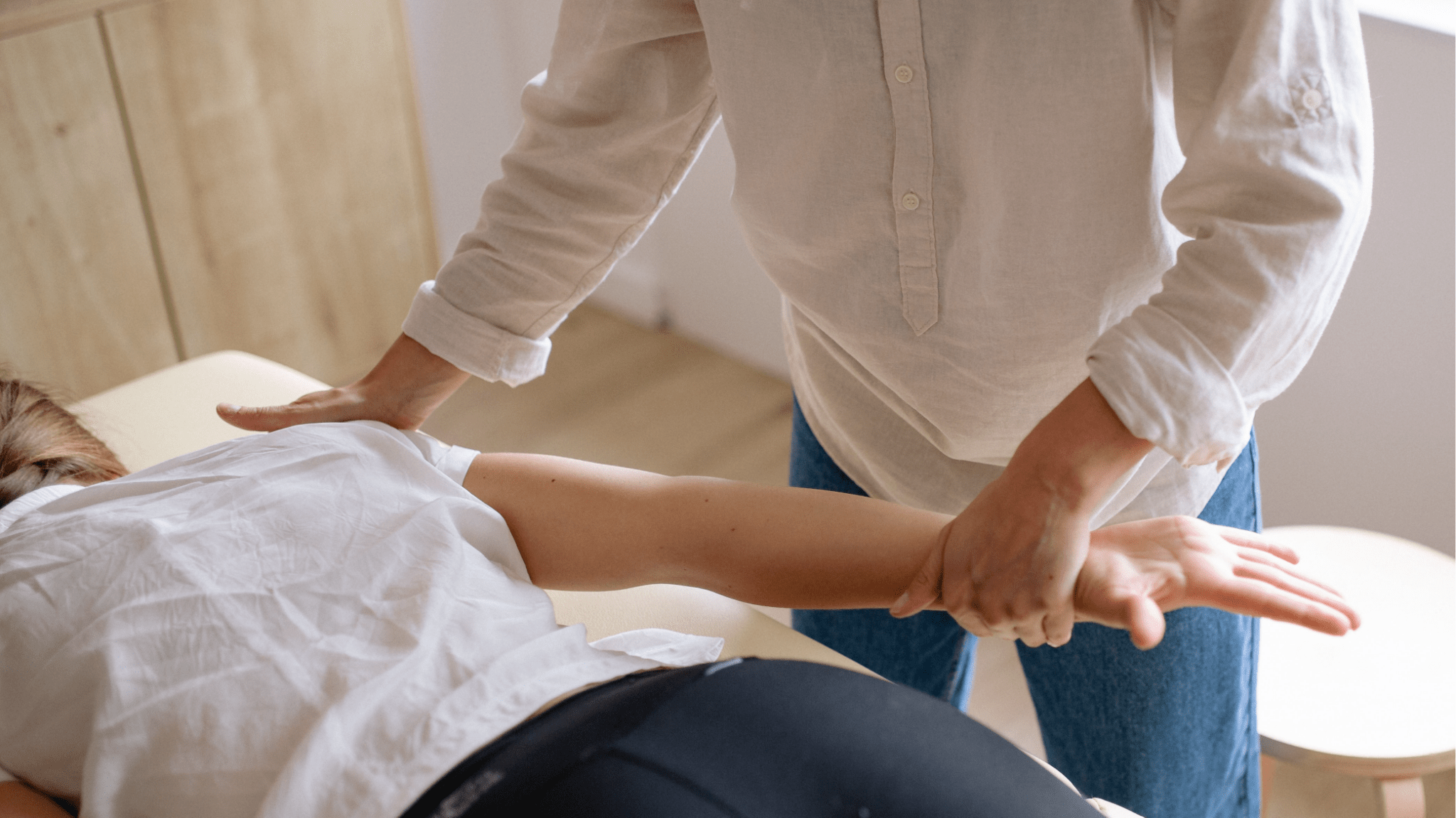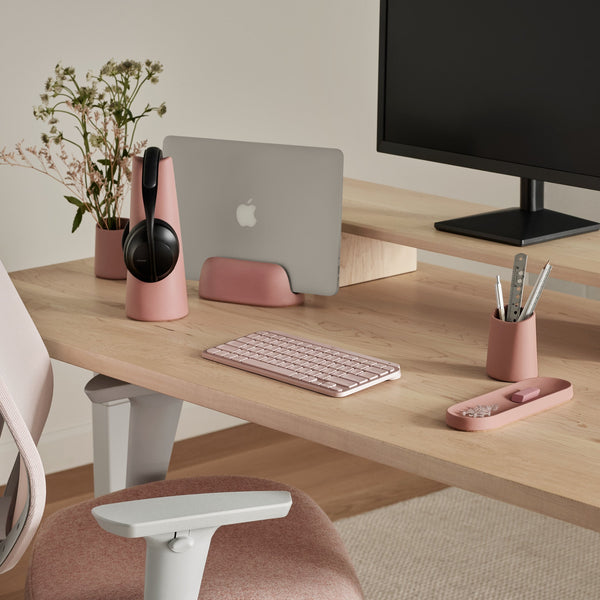If you work in a traditional office setting or you set up a makeshift home office during the pandemic, chances are your body is compensating for ill-adapted office furniture and lousy posture. This creates pain and discomfort that can lead to severe injuries if it hasn't already. While ergonomic furniture is primordial to creating a healthy work environment, physiotherapists can help repair the existing damage and prevent future damage.
What is physiotherapy?

Physiotherapy is the science of movement. As health care professionals, physiotherapists assist people in the prevention of injuries, rehabilitation after an accident, and in the treatment of different symptoms of illnesses and disabilities. They focus on restoring and optimizing strength, function, and movement through hands-on therapy, various techniques, and exercise plans. They can help you become stronger, more mobile, and flexible, allowing you to resume your normal activities by keeping you healthy and active. Don't hesitate to consult a physiotherapist if you need help with your posture, flexibility, chronic pain, physical limitation due to disabilities or illness, and postpartum recovery.They aim to promote health and well-being in their patients by making sure your body is well-balanced and not compensating for past trauma, bad posture, or misalignment. Problems they can address include neck and back pain, injury to bones, joints, muscles and ligaments, loss of mobility, and muscle strength. They can even help with lung problems related to respiratory illnesses and pelvic issues following childbirth.
ergonofis and Nxt Generation PHYSIO

At ergonofis, maintaining a healthy body is our founding principle. We are, therefore, firmly in favour of employing the services offered by physiotherapists. Our philosophy revolves around movement and ensuring your body is in the most neutral and natural position when working, so we've teamed up with Dominic Baillargeon (M.Sc. Pht, FCAMPT, SPC(d), UASD, CFL1) to understand how physiotherapists can help with work-related injuries.
Dominic is the founder of Nxt Generation PHYSIO. They offer sports, family, and corporate physiotherapy services in more than 10 locations across the Greater Montreal area.
His passion for movement analysis allowed him to work with many professional athletes from different sports. From early on in his career, Dominic's interest gravitated towards performance by working with Hockey Canada, Spartan Race, Ironman, and the CrossFit Games. Throughout the years, he developed his approach to treating injuries and optimizing performance to fulfill the high demands of his clients.
According to Dominic, to maintain optimal physical condition, people must learn more about it. After analyzing the biomechanics of hundreds of athletes, Nxt Generation PHYSIO's expertise now focuses on unpacking the different aspects of performance at work. Because after all, your performance at work is as important as an athlete's!
What are work-related injuries?

While injuries from non-office workers are more evident and well-documented, work-related injuries sustained by office workers can be subtle and develop over time. While these injuries include falls and lifting accidents, working in an ill-designed, non-ergonomic space creates long-term damage. It puts you at risk of developing several serious illnesses and disabilities.
Dominic Baillargeon stresses that while your work environment is not always the trigger of work-related injuries, they are often the underlying cause. Your posture and work furniture affect your body in the long run, causing weaknesses, and imbalances. With the increased popularity of high-performance sports in the workforce, like cycling and Crossfit, more people are putting extra strain on their bodies while working out. These weaknesses and imbalances are putting them at high risk of serious injury.
What are the most frequent complaints that physiotherapists hear concerning work-related injuries in office workers?

According to Dominic, most office workers' complaints stem from the vicious circle that comes with working in an ill-fitted work environment. People develop weaknesses and mild pain from non-ergonomic furniture and bad posture, then make a strenuous effort while doing a sport or moving things around, which leads to an acute injury, that is never adequately treated, and the circle continues.
He makes a distinction between acute/inflammatory injuries and chronic/mechanical injuries. For example, an acute injury would be throwing out your back while lifting a heavy box. The inflammatory phase from such injury will last between 3 and 7 days during which your body will shift how it functions to compensate for the injury and reduce pain. If untreated, this creates a strain on the compensating parts and causes lasting mechanical damage, which results in weaknesses. These weaknesses will put you at risk of another acute injury. Alternating between these acute and rehabilitation phases results in the development of chronic pain, which can become severe and lower your quality of life.
Widespread injuries Dominic Baillargeon encounters in office workers are related to their work environment. A non-ergonomic mouse and the height of your keyboard can lead to tension in the shoulder blade or carpal tunnel syndrome, which creates numbness in the hands. Sitting too long on an ill-adjusted chair can make your spinal disk compress leading to back pain. A monitor at the wrong height can cause cervical pain and eventually, osteoarthritis. Headaches and migraines are often related to how your body adjusts to your work setup.
How can a physiotherapist help with office-related injuries?

Addressing the issues mentioned above before you create long-term damage that can take years to reverse is vital to staying healthy in the long run. Consulting a physiotherapist is a smart step in keeping pain at bay and staying productive at work. Dominic believes you should visit one from one to four times a year, just like visiting your dentist, especially if your work insurance covers it.
If you do have discomfort and pain, you should book a visit to find the cause of the pain and treat it as soon as possible. They can help you bring your body back to what it was before. But even if you don't have an acute injury or even mild pain, a physiotherapist can help with prevention. They will analyze how your body moves: how every articulation, muscles, tissues interact. And give you tips and exercises you can do on your own to prevent future issues before your natural imbalances or your work environment cause severe long-term damage.
Some also offer consultation to set up an ergonomic office, either for your company or at home. At Nxt Generation PHYSIO, Dominic and his team can assist you in setting up an ergonomic workspace and adjusting it to fit your or your employees' needs. You can go to their website to book a 15-minute free consultation. The chances are that your workspace contributes to the creation of pain and weaknesses in your body. Ideally, you want office furniture and accessories that support you in maintaining a healthy and strong body, rather than harm you.
Work-related injuries are to be taken seriously, and office workers are often overlooked because the injuries they incur happen over a long period. Moreover, the triggering event often happens outside of the workplace, even though the underlying weaknesses were developed because of ill-fitted office furniture. Ensuring your office setting is ergonomic is crucial, but do not hesitate to get additional help from a physiotherapist to maintain the healthiest body possible.
References:
http://saskphysio.org/physiotherapy/what-is-physiotherapy
https://physiotherapy.ca/value-physiotherapy
https://physiotherapy.ca/becoming-pt-or-pta
https://thrivenowphysio.com/the-5-ways-to-tell-when-an-injury-needs-physiotherapy/
https://physiotec.com.au/when-should-you-see-a-physiotherapist/






Leave a comment